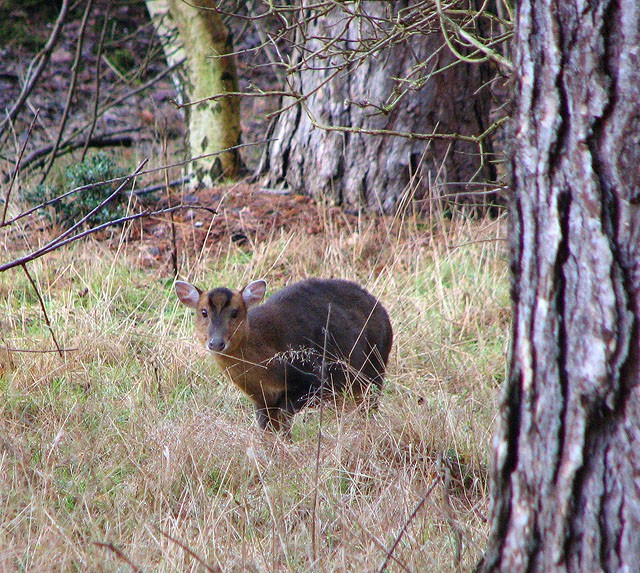Reeves's muntjac
A species of Muntjacs, Also known as Barking deer, Chinese muntjak Scientific name : Muntiacus reevesi Genus : Muntjacs
Reeves's muntjac, A species of Muntjacs
Also known as:
Barking deer, Chinese muntjak
Scientific name: Muntiacus reevesi
Genus: Muntjacs
Content
Description General Info
 Photo By Evelyn Simak , used under CC-BY-SA-2.0 /Cropped and compressed from original
Photo By Evelyn Simak , used under CC-BY-SA-2.0 /Cropped and compressed from original Description
Reeves's muntjac grows to 0.5 m (1 ft 8 in) high at the shoulder and 0.95 m (3 ft 1 in) in length, plus a short tail up to 4 in (10 cm) long. It weighs between 10 and 18 kilograms (22 and 40 lb) when fully grown. It is reddish-brown in appearance with striped markings on its face. The belly is creamy-white, with lighter fur extending to the neck, chin, and the underside of the tail. The males have short antlers, usually 4 in (10 cm) or less, and long upper canines (tusks), usually about 2 in (5.1 cm) long. Females have bony lumps on their foreheads and localized black spots. The Taiwanese subspecies (M. r. micrurus), commonly known as the Formosan Reeves' muntjac, is darker than other subspecies. Male Reeves's muntjac at Dumbleton Hall Female Reeves's muntjac at Prague Zoo 
General Info
Lifespan
15-20 years
Diet
Reeves's muntjac has a mixed diet consisting mainly of leaves, grass, and fruits. It also eats twigs, berries, and pineneedle, supplemented occasionally with seeds, fungi, and invertebrates.
Appearance
The reeves's muntjac is a small-sized deer with a compact body covered in a reddish or dark brown coat. It has elongated canine teeth or 'tusks' and short, antler-like horns on the males. Its long tail is upwards-pointing and its body has faint white spots. Female reeves's muntjac are generally smaller than males and lack the distinctive tusks and horns. The juvenile reeves's muntjac has a spotted coat for better camouflage.
Behavior
Reeves's muntjac is a solitary, primarily nocturnal animal which indicates territorial boundaries with bark, scrapes, and secretions from its preorbital glands. This species is known for its unique alarm call and barking. When threatened, reeves's muntjac often exhibits 'freeze' behavior, standing motionless to blend with its surroundings.
Population
Decreasing